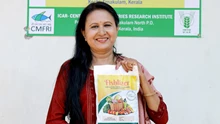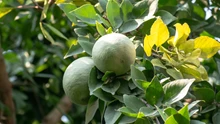
The Food and Agriculture Organization of the United Nations (FAO) recently released its report on world food commodity prices for April, indicating a mixed trend influenced by various factors including supply disruptions, demand dynamics, and weather conditions.
According to the FAO Food Price Index, which monitors monthly changes in global prices of key food items, the average index for April stood at 119.1 points, reflecting a slight increase of 0.3 percent from the revised March levels. However, compared to the previous year, the index was down by 9.6 percent, indicating a relatively stable but lower price environment.
The FAO Cereal Price Index saw a modest increase of 0.3 percent in April, ending a three-month declining trend. This rise was primarily driven by stabilized wheat prices due to intense competition among major exporters, counterbalancing concerns about crop conditions in parts of Europe, Russia, and the USA. Maize prices surged due to high demand and logistical disruptions in Ukraine and Brazil. However, the All-Rice Price Index declined by 1.8 percent, mainly due to decreased Indica quotations influenced by harvest pressures.
Vegetable oil prices also experienced a 0.3 percent increase, reaching a 13-month high, driven by higher quotations for sunflower and rapeseed oil, despite slightly lower prices for palm and soy oil.
Meat prices showed a notable increase of 1.6 percent in April, with poultry, bovine, and ovine meat prices all rising internationally. However, pig meat prices saw a marginal decline due to weak demand in Western Europe and leading importers like China.
On the other hand, the Sugar Price Index dropped by 4.4 percent from March, primarily due to improved global supply prospects, particularly in India and Thailand, coupled with favorable weather conditions in Brazil.
The Dairy Price Index witnessed a marginal decrease of 0.3 percent after six consecutive months of increases. This decline was attributed to sluggish spot import demand for skim milk powder and lower world cheese prices, partly offset by steady import demand for butter.
In addition to price trends, FAO's Cereal Supply and Demand Brief adjusted its forecast for world total cereal production in 2023, estimating a 1.2 percent increase from the previous year to 2,846 million tonnes. This adjustment mainly reflects new information from Myanmar and Pakistan.
The forecast for world cereal utilization was also raised, primarily driven by higher-than-anticipated feed use of maize and barley. Global maize utilization is expected to rise by 1.6 percent, while wheat and rice utilization are forecasted to increase by 1.9 percent and dip mildly, respectively.
World cereal stocks are projected to reach 890 million tonnes by the end of the 2024 seasons, indicating a 2.1 percent increase from the beginning of the year and a cereal stocks-to-use ratio of 30.9 percent.
FAO also revised its forecast for global wheat production in 2024, expecting a total of 791 million tonnes, a slight decrease from previous estimates but still marking a 0.5 percent increase from 2023.
Looking ahead, the main harvest period for coarse grains in southern hemisphere countries is approaching, with recent adverse weather conditions posing challenges to yield prospects in leading producer countries, notably Brazil and South Africa. This highlights the importance of monitoring global food supply and demand dynamics to ensure food security in the face of evolving challenges.











